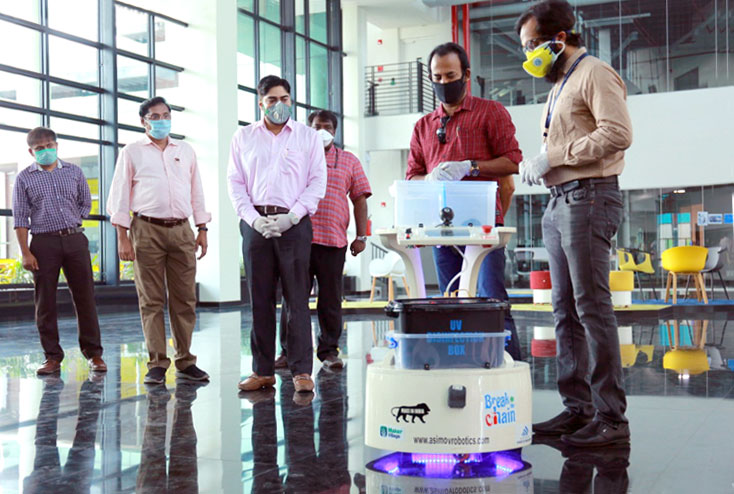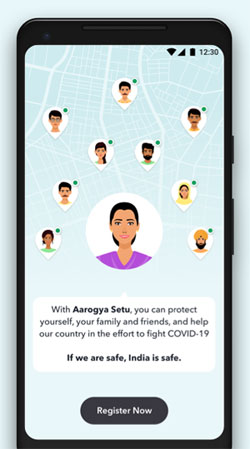INDIAN ARMED FORCES CHIEFS ON OUR RELENTLESS AND FOCUSED PUBLISHING EFFORTS

The insightful articles, inspiring narrations and analytical perspectives presented by the Editorial Team, establish an alluring connect with the reader. My compliments and best wishes to SP Guide Publications.

"Over the past 60 years, the growth of SP Guide Publications has mirrored the rising stature of Indian Navy. Its well-researched and informative magazines on Defence and Aerospace sector have served to shape an educated opinion of our military personnel, policy makers and the public alike. I wish SP's Publication team continued success, fair winds and following seas in all future endeavour!"

Since, its inception in 1964, SP Guide Publications has consistently demonstrated commitment to high-quality journalism in the aerospace and defence sectors, earning a well-deserved reputation as Asia's largest media house in this domain. I wish SP Guide Publications continued success in its pursuit of excellence.
- Prime Minister Modi Visits Punjab’s Adampur Air Base, Interacts with Airmen after Successful ‘Operation Sindoor’; Stern Message to Pakistan
- The layered Air Defence systems that worked superbly, the key element of Operation Sindoor
- Operation Sindoor | Day 2 DGMOs Briefing
- Operation Sindoor: Resolute yet Restrained
- India's Operation Sindoor Sends a Clear Message to Terror and the World – ‘ZERO TOLERANCE’
- Japan and India set forth a defence cooperation consultancy framework, talks on tank and jet engines
Drones and Robots in Pandemics
 |
By Lt. General P.C. Katoch (Retd) Former Director General of Information Systems, Indian Army |

As the world battles COVID-19, technology has thrown up apps, robots, drones and chatbots to help humanity. Indian startups flooded the National Security Advisory Board offering hundreds of apps. As the government launched Aarogya Setu, drones were witnessed spraying disinfectants, robots dispensing hand sanitisers at airports and apps analysing coughs to fight the contagion. Chatbots came into play to help healthcare professional. Two IIT alumni developed a portable device ‘Dozee’ which gives continuous 98 per cent accurate respiration data without wires or technical expertise, which helps monitor individuals in quarantine. Qkopy, a startup launched a mobile app ‘GOK Direct’ to dispense guidelines for travelers, quarantine protocol, and health safety tips to those tested positive and in quarantine. Pixxon AI Solutions offered quarantine monitoring services; an app linking those under quarantine to track the patient and send his or her location to the command centre every 15 minutes. Healthcare company Portea developed the chatbot ‘Cobot-19’ which can disseminate information, collect data from sources like World Health Organization, Centres for Disease Control and Prevention, and Johns Hopkins University to share it with the public. Intelli Automation developed the app ‘Safety First’ to protect anyone attacked by criminals automatically identifies nearest police station, PCR van and starts sending them the live feeds of audio, or video or both with GPS locations. Robots of Asimov Robotics were used to dispense sanitizers, distribute masks and is deploying its robots tribute used its robots ‘Karmi-bots’ to carry food for COVID-19 patients in isolation wards. KanavKahol has developed ‘MiazaMioor’, a smart mirror that can detect presence of a person as soon as they wave at it, and then it walks them through the multi-step hand washing process recommended by WHO in a 35-second animated video.

Aside from monitoring lockdown defaulters, drones in COVID-19 have been used for medicine deliveries in a major way by China. China is well advanced in AI, had used it during the SARS (Severe Acute Respiratory Syndrome) outbreak in 2002 and had a head-start in COVID-19 because it hid its outbreak from Wuhan for few months. Deliveries of medicines through robots results in saving time, reducing exposure to crucial medical staff. Robots help in surveillance and monitoring of crowded, built up areas, dense localities and by-lanes that helps reduce the virus spread and flattens the curve. This also saves exposure and risk of police personnel, who also can use drones for broadcasting messages and disseminate procedures to be followed. Broadcasting procedures and repeating instructions like social distances helps cover areas where such messages have not reached earlier or need to be repeated. Drones used frequently have major role to help governments build more efficiency with minimum human involvement. As mentioned earlier, drones can also effectively be used for spraying disinfectants.
The chaotic environment with onslaught of COVID-19 is reminiscent of what was shown in the Hollywood film ‘Contagion’ released in 2011. Humans are in lockdown as if in submarines. This situation will likely continue till requisite cure is developed. Positioning technologies are undoubtedly crucial in combating crisis and disasters. Government agencies and first responders on the ground require precise positions to accurately assess the situation, pinpoint the most risky areas and execute tasks accordingly. Without advanced technology solutions, battling pandemics could become unmanageable. China managed to mitigate the virus threat to large extent optimising technology solutions. China’s indigenous GNSS ‘BeiDou’ helped track patients and affected places; containing virus and analysing the outbreak, with reliable data, precise mapping and imagery enabling building scores of new hospitals and quarantine facilities. BeiDou also helped transportation planning and logistics, with BeiDou relaying real-time information through Radio Determination Satellite Service (RDSS). China’s earth observation and hyperspectral imaging satellites helped monitoring hospital construction. AI satellites helped analytics and processing of geographical reach of the virus, finding the distance between them and active infection. Robots were on frontline of prevent virus spread, as also for preparing meals at hospitals, performing waiters duties, spraying disinfectants to vending rice and dispensing hand sanitizers. In many hospitals, robots undertook diagnosis and thermal imaging, and transporting medical samples.
It may be recalled that in January 2017, a surgeon in China had performed world's first remote operation using 5G technologies; the doctor in China’s Fujian Province used 5G network to control robotic arms in a remote location 48 km away. During the operation, the surgeon removed the liver of a laboratory test animal over the 5G connection. In battling COVID-19, a hospital in Wuhan was staffed entirely by robots performing IoT enabled services from initial screening to monitoring all changes in the body, as also catering. China used a smart-phone app with colour-coded health rating system to track millions of people daily. It assigns three colours to people — green, yellow and red on the basis of their travel and medical histories. Citizens had to log into the app. Whether a person should be quarantined or allowed in public spaces was decided based on the colour code. Only people having green colour code could were allowed in office and public places.
Dashboards using Big Data have been deployed to continuously monitor the virus. Face recognition and infrared temperature detection techniques have been installed in leading cities. Thousands of facial recognition-powered CCTV cameras have also been installed at almost every quarantine centre. Pandemics don’t whither easily. Swine Flu hit India in 2009, a second wave hit in 2015 with 734 deaths and it has still not completely gone. COVID-19 is more vicious and countries like China are reporting a second wave of virus attack. Like China, most countries affected by COVID-19 are using apps for smart-phone tracking, robots and drones to battle the scourge. GIS enables real-time visual display of epidemic data while thematic applications of situational awareness using Big Data helps epidemic prevention and control measures to concerned authorities and the general public. GIS also enables maintaining epidemic situation awareness maps as also epidemic correlation research and judgment maps and mobile epidemic maps.In the ever-expanding lineup of disinfectant robots, Xenon (America) ‘LightStrike’ robot’s pulsed xenon lamp shoots intense UV light in millisecond flashes, deactivating a whole range of microbes, including bacteria, spores, fungi and viruses.
India has enough talent to emulate and better in what has been discussed above. But India also has a unique problem in its doctors and health workers being attacked, abused and even spat at as also thousands avoiding testing because of the perceived stigma attached with it and the notion and fear of being ostracised by the family and society. India needs to optimise technology to combat this effectively and speedily within the construct of battling COVID-19.





